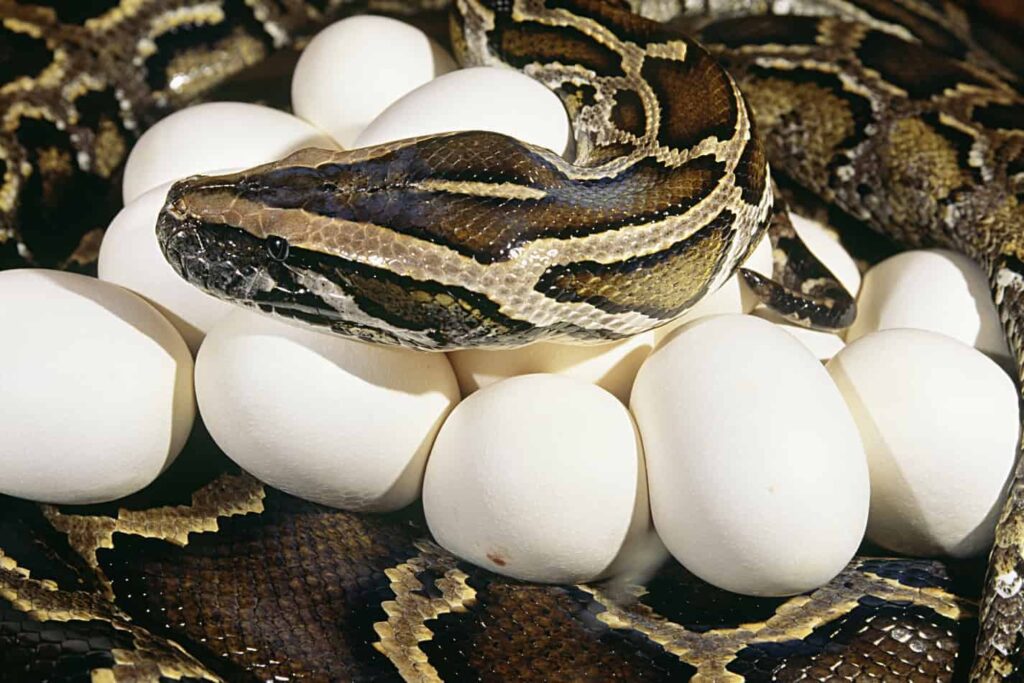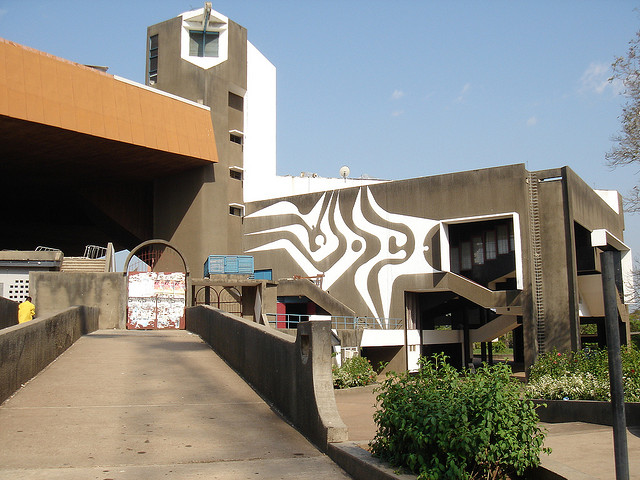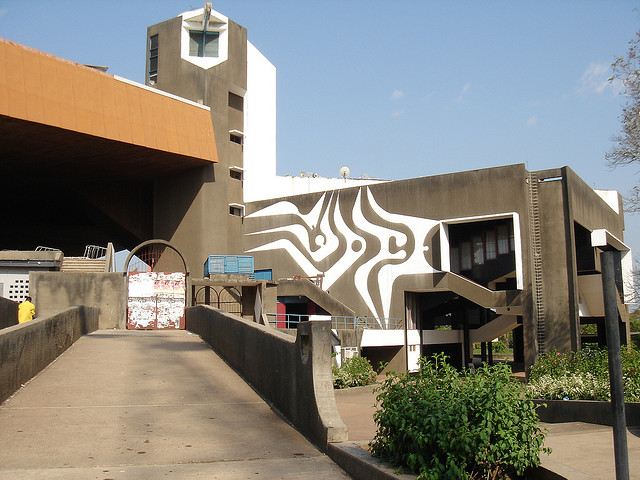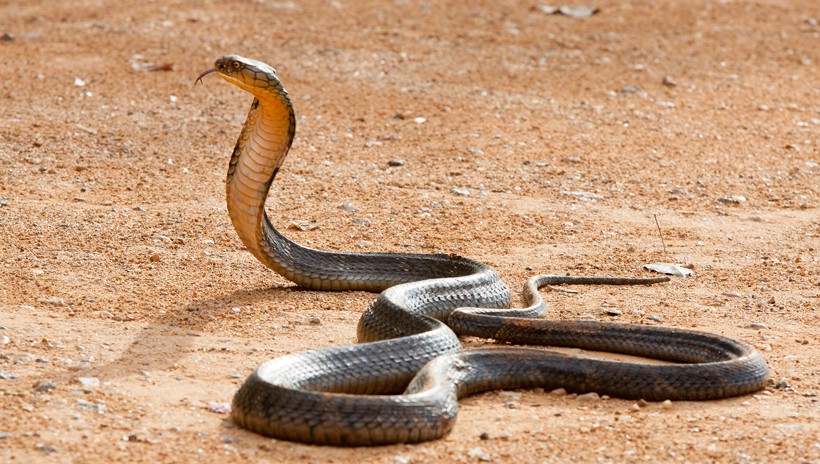
Snakes play important roles in ecosystem. They are carnivorous animals i.e. they are meat eaters. They feed on rodents, rabbits, birds, insects, amphibians (e.g. frogs and toads), fish, earthworms, eggs, slugs, other reptiles, etc. They swallow their food whole. Feeding on rodents and other disease causing organisms helps us in many ways as human beings.
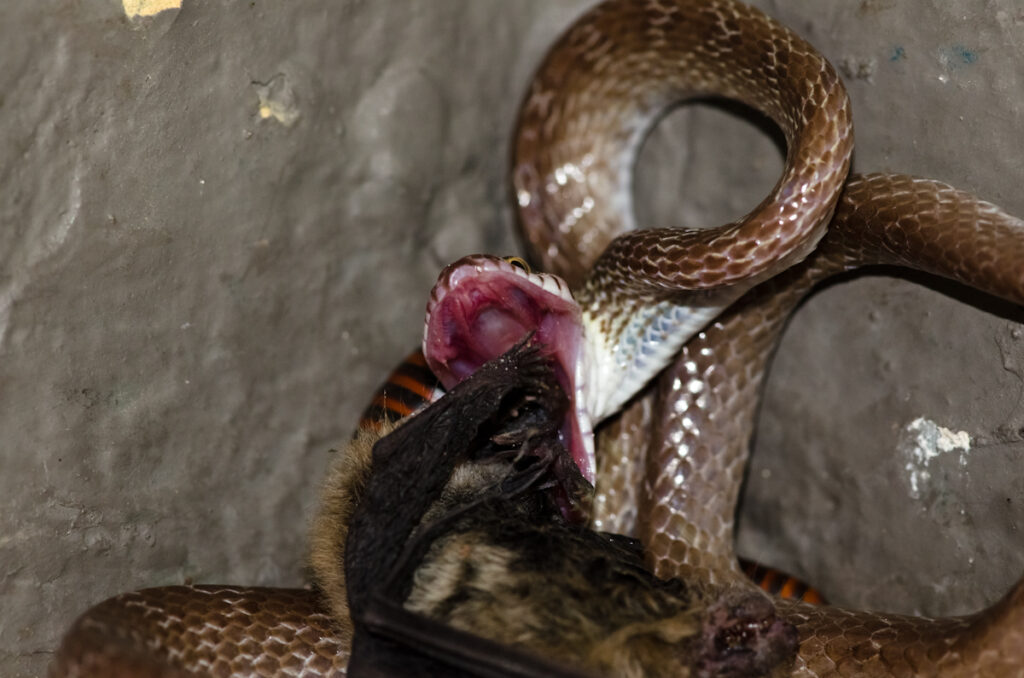
Without snakes, the numbers of rodents, birds and other disease causing organisms would have increased. The rodents, birds and other disease causing organisms would have done more damage to our farm produce. They would have invaded our homes in multiple folds. They would have caused more diseases and deaths among us.
Reproduction in Snakes
There are three methods of reproduction in snakes.
One: This involves laying of eggs first. After the laying of the eggs, the eggs are kept warm or incubated by the mother until the baby snakes emerge from the shells. Most snakes (about 70%) lay eggs. Those that lay eggs include mambas, adders, cobras, etc. Snakes that reproduce through laying eggs first are said to be oviparous.
Two: This does not involve egg at all. The mother snake gives birth to live young ones with no eggs involved at any stage of development. The mother snake directly nourishes her developing young ones through a placenta and yolk sac. This type of birth is what we have in mammals. Snakes that reproduce this way are viviparous snakes. Examples of viviparous snakes are boa constrictors and green anacondas.
Three: Here, the mother snake develops and hatches the eggs inside her body and the baby snakes emerge fully active with no shell at all. Snakes that reproduce this way are said to be ovoviviparous snakes. Examples of ovoviviparous snakes are rattlesnakes.
Venomous and Non-Venomous Snakes
There are about 3,500 known snake species in the world. Out of these 3,500 species, only about 600 of them are venomous. These 600 venomous species are the snakes that pose a significant health risk to humans, through snakebites or other physical trauma. They are not up to 20%. The varieties of snakes that most often cause serious snakebites depend on the region of the world.

In Africa, the most dangerous species include black mambas, puff adders and carpet vipers. In the Middle East the species of greatest concern are carpet vipers and elapids. In Central and South America, Bothrops and Crotalus (rattlesnakes) are of greatest concern. In South Asia, Indian cobras, common kraits, Russell’s viper and Lazib Sharar Shaoik are the most dangerous species.
It should be noted that king cobra is the world’s longest venomous snake. It grows to 18 feet (5.5 metres) in length. It produces enough neurotoxin to kill an elephant with a single bite.
In the following video, an Indonesian man got killed by cobra while he was trying to handle the snake. The cobra bit him three times!
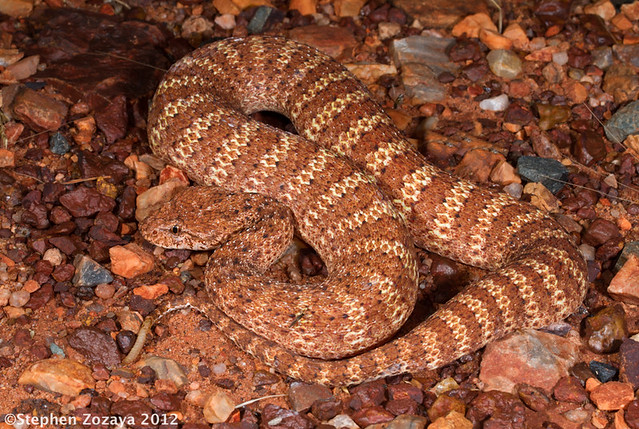
There are few animals that are naturally immuned to snake bites by virtue of their body physiology. These include the hedgehog, the mongoose, the honey badger, the opossum, the secretarybird and a few other birds that feed on snakes.
Black Mamba
Black mamba is native to many parts of Sub-Saharan Africa. It is one of the world’s deadliest snakes. It is the fastest land snake in the world. It can run with the speed of 12.5 miles/hour (20.117 km/hr). It can move faster than most people can run. It is considered the most aggressive snake in the world. According to Sara Viernun, a herpetologist based in Madison, Wisconsin, black mamba is “the longest species of venomous snake in Africa and the second longest in the world”. Black mamba has caused thousands of human deaths. According to National Geographic, they can grow to be 14 feet long (4.25 meters), though their average length is around 8 feet (2.4 m). These giants can live up to 11 years in the wild.

Black mambas are extremely toxic and very fast snakes. The snake’s venom is so strong and so voluminous that it can kill an elephant in just a few hours. They are highly aggressive when threatened, “known to strike repeatedly and inject a large volume of venom with each strike.” Their venom is potentially lethal, and though antivenin exists, it is not widely available in the black mamba’s native habitat of southern and eastern Africa. For this reason, they are considered a top killer in a land where nearly 20,000 people die from snake bites every year, according to PBS’s Nature.
“Similar to cottonmouths, when threatened a mamba will open its mouth to show the black lining as a warning signal.” said Viernun. They slither quickly in short bursts over level ground, and can zoom along with about one-third of their bodies off the ground and their heads proudly held high. The black mamba racing along with its head nearly 4 feet (1.2 m) in the air is a terrifying and amazing sight.
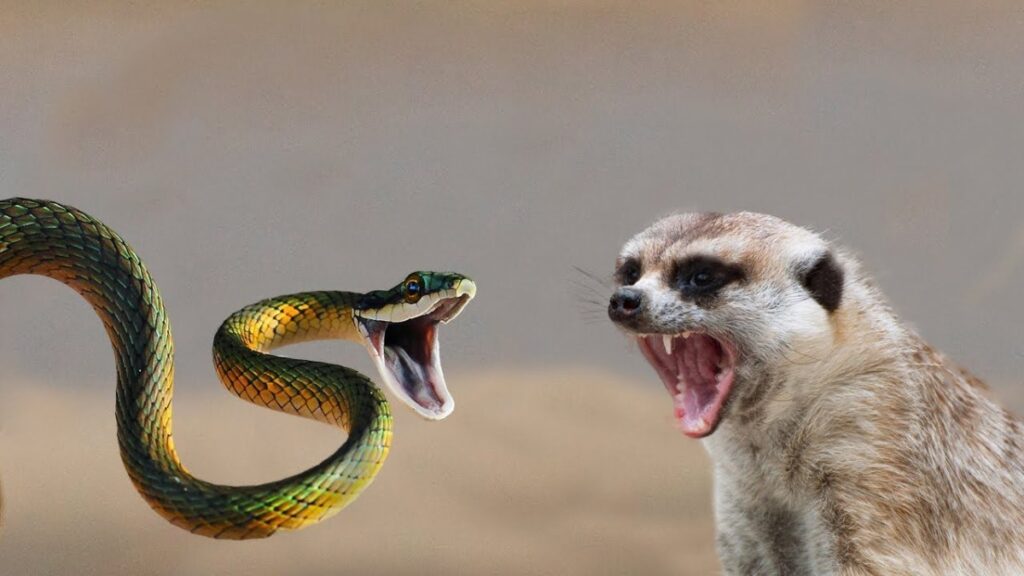
“When threatened with no perceived available escape, these snakes will raise their upper body off the ground to stand erect,” Viernum said. Their front third of their bodies can rise 3 to 4 feet (0.9 to 1.2 m) off the ground. Then, they will “spread their cobra-like neck flaps [and] gape their mouths to expose the black lining.” This is a defensive posture aiming to scare away the threat. If black mambas need to attack to defend themselves, they will “strike repeatedly, potentially deliver large doses of venom with each strike, and hiss loudly.” Then, they’ll slither away as fast as possible.
Just two drops of potent black mamba venom can kill a human, according to South Africa’s Kruger National Park. “Like cobras and coral snakes, the venom of a black mamba contains neurotoxins,” Viernum told Live Science. She described the venom as “fast-acting.” It shuts down the nervous system and paralyzes victims, and without antivenom, the fatality rate from a black mamba bite is 100 percent. “Fatalities from black mamba bites have been documented to occur within as little as 20 minutes after injection,” said Viernum. “However, most known fatalities have occurred within 30 minutes to 3 hours or longer.”
Snake Venom Toxicity
There are basically two types of snake venom namely:
(i) Neurotoxic venom (ii) Haemotoxic venom
Neurotoxic venom affects nervous system of the body while Haemotoxic venom affects the tissue and blood. Elapid snakes including coral snakes, cobras, mambas, sea snakes, and kraits have primarily neurotoxic venom. In contrast, vipers including rattlesnakes, copperheads, and cottonmouths—have primarily haemotoxic venom.
“Snake bite is a neglected public health issue in many tropical and subtropical countries. About 5.4 million snake bites occur each year, resulting in 1.8 to 2.7 million cases of envenomings (poisoning from snake bites). There are between 81,410 and 137,880 deaths and around three times as many amputations and other permanent disabilities each year.

Most of these occur in Africa, Asia and Latin America. In Asia up to 2 million people are envenomed by snakes each year, while in Africa there are an estimated 435,000 to 580,000 snake bites annually that need treatment. Envenoming affects women, children and farmers in poor rural communities in low- and middle-income countries. The highest burden occurs in countries where health systems are weakest and medical resources sparse.
Bites by venomous snakes can cause acute medical emergencies involving severe paralysis that may prevent breathing, cause bleeding disorders that can lead to fatal haemorrhage, cause irreversible kidney failure and severe local tissue destruction that can cause permanent disability and limb amputation. Children may suffer more severe effects, and can experience the effects more quickly than adults due to their smaller body mass.
In contrast to many other serious health conditions, a highly effective treatment exists. Most deaths and serious consequences from snake bites are entirely preventable by making safe and effective antivenoms more widely available and accessible. High quality snake antivenoms are the only effective treatment to prevent or reverse most of the venomous effects of snake bites. They are included in the WHO List of essential medicines and should be part of any primary health care package where snake bites occur.” (WHO).
According to WHO List of essential medicines, safe and effective antivenoms should be part of any primary health care package where snake bites. Unfortunately, how many of our main hospitals, both public and private where snake bites in this part of the world, have access to effective antivenoms, not to talk of primary health care package where snake bites are recorded? Snake bite crisis is a serious crisis in this part of the world. For those of us who live in an area where snake bites are experienced by people in Sub-Saharan Africa, we need to be more careful. Snake bite, as simple as it is to handle, could mean a death sentence! We need to ensure our surrounding is clean and devoid of bushes that can attract or harbour snakes.
Governments in Sub-Saharan Africa should also look into how they will provide safe and effective antivenoms to hospitals and primary health care where snake bites are recorded.
Photo Credits: natureworks.com.au, evilavatar.com, emborapets.com, wallpaperup.com, ehowzit.co.za, metro.co.uk, wierdstuffwemake.com, sabisabi.com; aboutanimals.com
Video Credits: DailyVids, National Geographic, Ord Hen; Greg Coates

